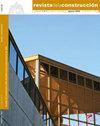Dynamic responses of reinforced concrete slabs under sudden impact loading
IF 1.4
4区 工程技术
引用次数: 5
Abstract
Reinforced concrete (RC) slabs may be subjected to low-velocity impact effect in their service lives. In this study, it is aimed to investigate dynamic responses of two-way rc slabs. So, a total of 6 slabs with 500x500, 550x550 and 600x600 mm side lengths and having same thickness are both experimentally and numerically investigated under low velocity impact loading. Two different reinforcement configurations are used in the production of each slab. A drop test setup is designed for the experimental study. Besides, measurement devices such as accelerometer, lvdt, dynamic load cell, data logger and optic photocells are used in the experimental program. Experiments on the specimens are carried out for the same level of impact energy. Acceleration, displacement and impact load values of slabs are presented by time dependent graphs. In addition, cracks and deformations are observed during tests. In the numerical part of this study, a detailed finite element procedure where explicit dynamic analysis is performed by Abaqus finite elements software is established. The simulations are performed for each test specimen under impact effect and analysis results are used in the verification of experimental results. The relationship between experimental and numerical studies is comparatively examined in terms of crack patterns and average ratios of accelerations, displacements, impact loads. Finally, it is considered that the proposed numerical model could be used in the evaluation of experimental results under impact loading.钢筋混凝土板在冲击荷载作用下的动力响应
钢筋混凝土(RC)板在其使用寿命中可能会受到低速冲击效应。本研究旨在研究双向钢筋混凝土板的动力响应。因此,对6块边长分别为500x500、550x550和600x600 mm、厚度相同的板在低速冲击载荷下进行了实验和数值研究。每个板的生产过程中使用两种不同的钢筋配置。为实验研究设计了跌落试验装置。此外,实验程序中还使用了加速度计、lvdt、动态称重传感器、数据记录器和光电池等测量设备。在相同水平的冲击能量下对试样进行了实验。板的加速度、位移和冲击载荷值由时间相关图表示。此外,在试验过程中还观察到裂纹和变形。在本研究的数值部分,建立了一个详细的有限元程序,其中通过Abaqus有限元软件进行显式动力学分析。对冲击作用下的每个试样进行了模拟,并将分析结果用于验证实验结果。从裂纹模式和加速度、位移、冲击载荷的平均比值的角度,对实验研究和数值研究之间的关系进行了比较研究。最后,认为所提出的数值模型可以用于评估冲击载荷下的实验结果。
本文章由计算机程序翻译,如有差异,请以英文原文为准。
求助全文
约1分钟内获得全文
求助全文
来源期刊

Revista de la Construccion
工程技术-工程:土木
CiteScore
2.30
自引率
21.40%
发文量
0
期刊介绍:
The Journal of Construction is aimed at professionals, constructors, academics, researchers, companies, architects, engineers, and anyone who wishes to expand and update their knowledge about construction. We therefore invite all researchers, academics, and professionals to send their contributions for assessment and possible publication in this journal. The publications are free of publication charges.
OBJECTIVES
The objectives of the Journal of Construction are:
1. To disseminate new knowledge in all areas related to construction (Building, Civil Works, Materials, Business, Education, etc.).
2. To provide professionals in the area with material for discussion to refresh and update their knowledge.
3. To disseminate new applied technologies in construction nationally and internationally.
4. To provide national and foreign academics with an internationally endorsed medium in which to share their knowledge and debate the topics raised.
 求助内容:
求助内容: 应助结果提醒方式:
应助结果提醒方式:


